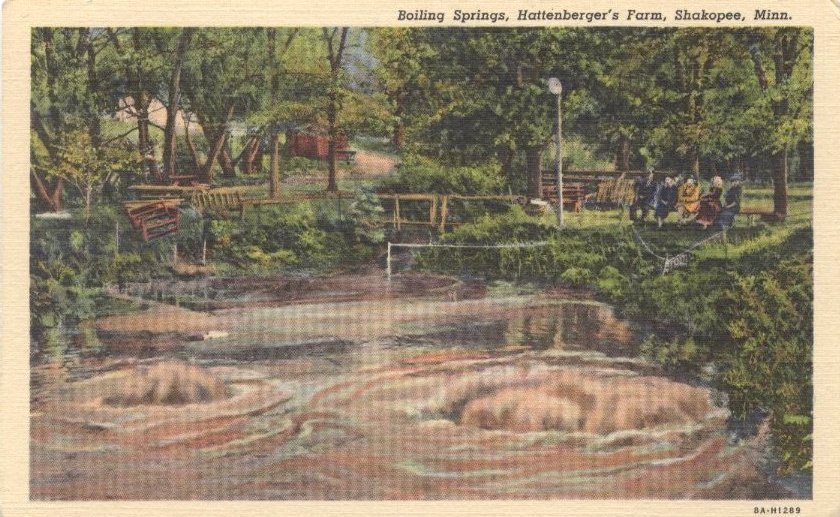By Jacob Dalland
On June 2nd, 1925, Scott County found itself on the edge of a strong tornado. Although the damage was mainly in Carver and Hennepin counties, Shakopee especially had enough damage from the storm to be considered the most severe tornado damage in Shakopee history.
The tornado was part of a larger severe thunderstorm that swept through both sides of the Minnesota River in Carver, Scott, and Hennepin counties. The severe weather that evening concluded a heat wave, as many severe thunderstorms do; Memorial Day was the hottest in many years at over 94 degrees. The day of the tornado was nonetheless pleasant until the storm started. Many people were outside eating their suppers at picnics before the storm started.
Just before 7 p.m., the sky started getting dark with storm clouds. The severe weather caught many people off-guard. However, those outside were for the most part able to find shelter quickly. Blakeley residents were the first in Scott County to be hit with damaging winds, which damaged or destroyed many barns and trees, but no lives were lost. Similar damage happened in Belle Plaine, though a horse and a calf were killed. Minimal damage was done in Jordan.
The tornado itself apparently touched down somewhere between Belle Plaine and Carver at 7 p.m. Three people were killed in Carver who were out picnicking at the park and had a tree fall on the pavilion they took shelter in. The tornado soon moved into Chaska. No deaths occurred there, but many buildings were damaged. Guardian Angels School, for example, had most of its rear wall destroyed (which meant eighth graders didn’t have to take a high school entrance exam)!
Shakopee was, apparently, just on the edge of the tornado. Logically, the western side of town was hit the hardest. The Mudcura Sanitarium, on that same side, received special attention in the Shakopee Tribune. A few garages were destroyed by the storm on the sanitarium grounds. Dr. Fischer, who ran the sanitarium, broke his arm when the wind slammed a door on him. His assistant, Larry Hunter, was injured in the same way. One of the hardest-hit places in Shakopee was St. Mark’s Catholic Church: the steeple’s cross was torn off, and so was one of the spires, which resulted in damage to the interior of the church. Many houses and buildings in downtown Shakopee had moderate damage. That being said, no deaths occurred in Shakopee, and most of the damages were covered by insurance (including that at St. Mark’s).
The tornado proceeded on through farmland in Chanhassen, Eden Prairie, and Minnetonka before ravaging one more town: Hopkins. Although only one death happened there, more buildings were destroyed there than in Carver, Chaska, or Shakopee. For example, a Moline warehouse was reduced to pieces as well as a historic schoolhouse from 1862 (whose fate was being debated before the tornado happened). After a brief entry into St. Louis Park, the tornado finally dissipated.
Overall, the tornado of June 2nd, 1925 is arguably the most historic tornado in Scott County history and even more significant for places in Carver and Hennepin Counties. While there were some strong tornadoes (EF-2) in 1952 and 1977, the one in 1925 appears to be the one most remembered by the communities it hit. This could be because of the level of damage. Mary Raabe, of the Hopkins Historical Society, wrote that “it could easily be a stage three tornado by today's standards”, probably meaning to say it would be classified as an EF-3 tornado. Based on my own comparison of the reported damage and the damage criteria for an EF-3 tornado, she is likely correct.
References
Barac, LaVonne E. Chaska: A Minnesota River City, Prehistory to 1950. Chaska: Chaska Historical Society, 2019.
Hopkins Historical Society. Hopkins, Minnesota: Through the Years, edited by Beverly O. Ewing. Hopkins: Hopkins Historical Society, 2002.
“Local Weather Highlights”. St. Louis Park Historical Society. Accessed March 15, 2024. https://slphistory.org/weather/.
Olson, Mark. “Look Back”. SW News Media. Accessed March 15, 2024. https://www.swnewsmedia.com/look-back/image_9f89e970-fcf8-5a97-9626-45fa27e95b5c.html.
Raabe, Mary. “June 2nd, 1925”. Hopkins Historical Society. Accessed March 15, 2024. https://www.hopkinshistory.org/tornado-of-1925.html.
“Scott County Escapes a Tornado’s Worst”. Jordan Independent, June 4, 1925, p. 1.
Stolzman, William F. A History of the Church of St. Mark, Shakopee, MN, 1856-2006. Unpublished, 2007.
“Three Killed in Storm at Carver – Many Barns Wrecked in This Section”. Belle Plaine Herald, June 4, 1925, p. 1.
“Tornado Kills Three at Carver”. Shakopee Tribune, June 4, 1925, p. 1.











